 Terry’s back. And so is Dale. And so am I. I’ve known Terry since about age twelve. Dale and I go back even further having met in first grade at age six or so. Terry collects and restores Wheel Horse tractors and is a regular exhibitor at an event sponsored by the Tri-State Gas Engine and Tractor Association at the Jay County Fairgrounds in Portland, Indiana. Dale has a passion for bicycles and regularly exhibits at an event the National Vintage Motor Bike Club puts on at the same place. I have attended both events multiple times as a spectator with a lot more curiosity than knowledge. The events have provided the three of us with an informal get-together opportunity and that is something that’s been extra scarce this year.
Terry’s back. And so is Dale. And so am I. I’ve known Terry since about age twelve. Dale and I go back even further having met in first grade at age six or so. Terry collects and restores Wheel Horse tractors and is a regular exhibitor at an event sponsored by the Tri-State Gas Engine and Tractor Association at the Jay County Fairgrounds in Portland, Indiana. Dale has a passion for bicycles and regularly exhibits at an event the National Vintage Motor Bike Club puts on at the same place. I have attended both events multiple times as a spectator with a lot more curiosity than knowledge. The events have provided the three of us with an informal get-together opportunity and that is something that’s been extra scarce this year.

 As a primarily outdoor event, I figured the show would be relatively safe and I believe it was. At odds with that belief was the fact that most attendees walked about without masks most of the time and often chatted without fully six-feet of separation. But people did don masks when standing in food lines and such, and staff at the entrance and elsewhere were masked. And, while faces weren’t always a fathom apart, they were rarely significantly closer than that and people at least seemed somewhat aware of their distance from others. There were frequent announcements about masks being required in the few indoor spaces being used this year, and it sounded like that was being enforced although I did not check it personally. Those announcements also told everyone that masks were required by the free shuttles. We noted that not one person was wearing a mask when the shuttle passed several times within sight of our home base at Terry’s display, but the one time I actually saw someone exiting the shuttle he pulled up his mask as he walked past the other passengers. It was a mixed bag, Safe? Relatively is the right word.
As a primarily outdoor event, I figured the show would be relatively safe and I believe it was. At odds with that belief was the fact that most attendees walked about without masks most of the time and often chatted without fully six-feet of separation. But people did don masks when standing in food lines and such, and staff at the entrance and elsewhere were masked. And, while faces weren’t always a fathom apart, they were rarely significantly closer than that and people at least seemed somewhat aware of their distance from others. There were frequent announcements about masks being required in the few indoor spaces being used this year, and it sounded like that was being enforced although I did not check it personally. Those announcements also told everyone that masks were required by the free shuttles. We noted that not one person was wearing a mask when the shuttle passed several times within sight of our home base at Terry’s display, but the one time I actually saw someone exiting the shuttle he pulled up his mask as he walked past the other passengers. It was a mixed bag, Safe? Relatively is the right word.

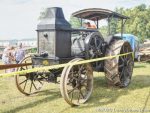
 We made two forays into the exhibits. Our first destination was a threshing operation that some of Dale’s neighbors were involved in. Threshing is one of many farming tasks involving multiple generations, and that was the case at this demonstration. Power for the threshing machine was supplied by a kerosene-fueled 1920 Rumely Oil Pull. Mobility came via a somewhat newer 1954 International Harvester Farmall.
We made two forays into the exhibits. Our first destination was a threshing operation that some of Dale’s neighbors were involved in. Threshing is one of many farming tasks involving multiple generations, and that was the case at this demonstration. Power for the threshing machine was supplied by a kerosene-fueled 1920 Rumely Oil Pull. Mobility came via a somewhat newer 1954 International Harvester Farmall.


 I’m told that large scale vintage construction gear has long been part of the show but I either failed to notice or failed to remember. There was even a big pile of dirt available where “kids” could play without being yelled at for messing up the yard.
I’m told that large scale vintage construction gear has long been part of the show but I either failed to notice or failed to remember. There was even a big pile of dirt available where “kids” could play without being yelled at for messing up the yard.


 Here are a few of the things to be seen near home base where we returned to eat lunch purchased from a nearby vendor.
Here are a few of the things to be seen near home base where we returned to eat lunch purchased from a nearby vendor.
 This is the home base I’ve mentioned, with Terry under the canopy and Dale beside it. Those are, of course, just some of Terry’s herd of Horses. The newest addition is that black nose that can barely be seen at the far end of the row. It’s a real one-of-a-kind hotrod that, while I failed to get a good picture of today, I did get pictures of at its place of birth. They’re here and here.
This is the home base I’ve mentioned, with Terry under the canopy and Dale beside it. Those are, of course, just some of Terry’s herd of Horses. The newest addition is that black nose that can barely be seen at the far end of the row. It’s a real one-of-a-kind hotrod that, while I failed to get a good picture of today, I did get pictures of at its place of birth. They’re here and here.

 Following lunch, we headed out to cruise the other half of the show. I rode behind Dale in the trailer as I had on the earlier outing. I quite enjoyed being chauffeured around and being able to take (only slightly crooked) pictures at will. Dale once had a summer job as a test driver for Lambert Manufacturing and scored a factory ride for a lawn tractor rally at the annual company picnic. A trailer was included and I was invited so I covered the rally with a view somewhat like the first picture behind a Lambert tractor somewhat like the red one in the second picture.
Following lunch, we headed out to cruise the other half of the show. I rode behind Dale in the trailer as I had on the earlier outing. I quite enjoyed being chauffeured around and being able to take (only slightly crooked) pictures at will. Dale once had a summer job as a test driver for Lambert Manufacturing and scored a factory ride for a lawn tractor rally at the annual company picnic. A trailer was included and I was invited so I covered the rally with a view somewhat like the first picture behind a Lambert tractor somewhat like the red one in the second picture.


 Not only do the dirt piles you play in grow bigger as you age, so too do the scale models you build. This one is street legal and capable of hauling… stuff.
Not only do the dirt piles you play in grow bigger as you age, so too do the scale models you build. This one is street legal and capable of hauling… stuff.
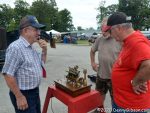
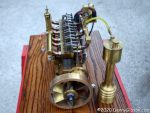 The guy with the miniature semi-tractor told us about this miniature inline-six a few aisles over. It isn’t a copy of any particular bigger engine, but, with the exception of the carburetor, is built completely from scratch. Even the tiny sparkplugs were machined from some sort of countertop material. It’s mighty impressive from the outside but thinking about the cam and crank shafts inside makes it even more phenomenal.
The guy with the miniature semi-tractor told us about this miniature inline-six a few aisles over. It isn’t a copy of any particular bigger engine, but, with the exception of the carburetor, is built completely from scratch. Even the tiny sparkplugs were machined from some sort of countertop material. It’s mighty impressive from the outside but thinking about the cam and crank shafts inside makes it even more phenomenal.
 With a straight line distance of approximately ninety miles, this becomes the farthest I’ve been from home since February. Greenville, which I’ve been to multiple times, is about sixty straight line miles away. The other Gibson I saw there was a lot farther from home than I. This fellow is from a Seattle, WA, company that closed down in 1952. If my original plans for this year had held up, that’s where I would have been sometime earlier this month. Hold on, Seattle, I’m coming.
With a straight line distance of approximately ninety miles, this becomes the farthest I’ve been from home since February. Greenville, which I’ve been to multiple times, is about sixty straight line miles away. The other Gibson I saw there was a lot farther from home than I. This fellow is from a Seattle, WA, company that closed down in 1952. If my original plans for this year had held up, that’s where I would have been sometime earlier this month. Hold on, Seattle, I’m coming.








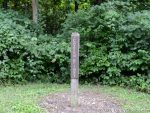




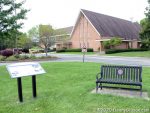



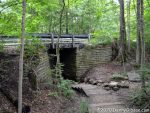





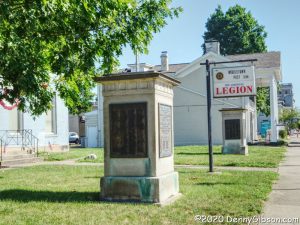


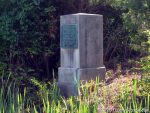
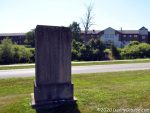
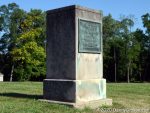
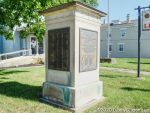
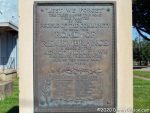
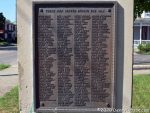
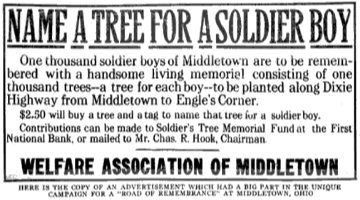 References to the Middletown Road of Remembrance often mention a thousand trees lining a mile of roadway. Both seem to have been considerably exceeded. The markers that now stand at the Legion, originally stood at 14th and Main. The southern markers originally stood about a mile and a half away at Oxford and Main. Plans to construct arches over the road where the markers stood were mentioned, but I’ve seen nothing to indicate that ever happened. Middletown’s Road of Remembrance was dedicated on Labor Day, September 6, 1920, and there are possibly legitimate claims that this was the nation’s first Road of Remembrance to be completed. The ad image is from
References to the Middletown Road of Remembrance often mention a thousand trees lining a mile of roadway. Both seem to have been considerably exceeded. The markers that now stand at the Legion, originally stood at 14th and Main. The southern markers originally stood about a mile and a half away at Oxford and Main. Plans to construct arches over the road where the markers stood were mentioned, but I’ve seen nothing to indicate that ever happened. Middletown’s Road of Remembrance was dedicated on Labor Day, September 6, 1920, and there are possibly legitimate claims that this was the nation’s first Road of Remembrance to be completed. The ad image is from 
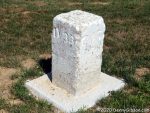
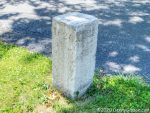
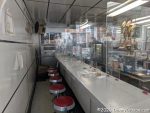

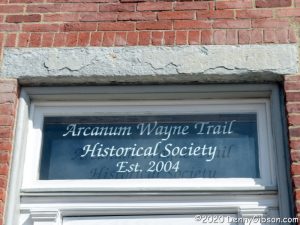

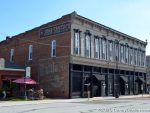

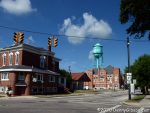




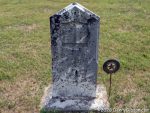
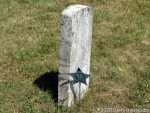
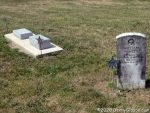
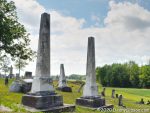





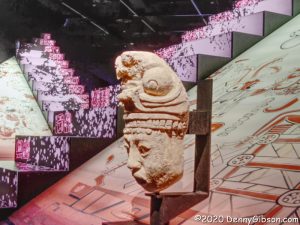



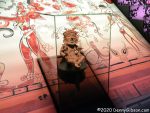

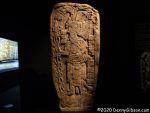


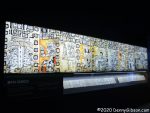

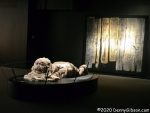
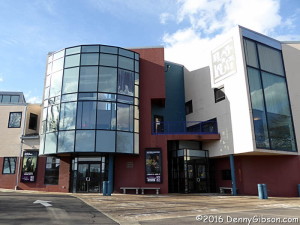


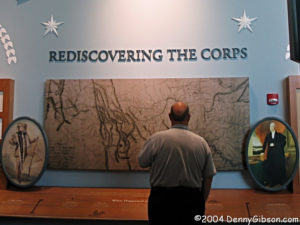
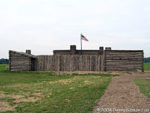
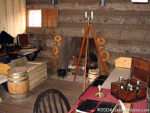

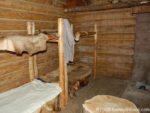
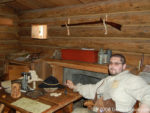

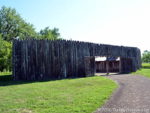
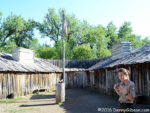
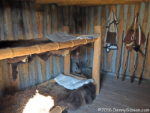

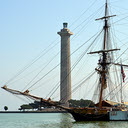
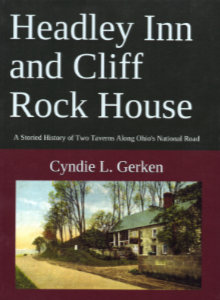 Cyndie Gerken’s third big helping of National Road knowledge was served up a bit more than a year ago, and I have no good excuse, or even enough bad ones, to account for waiting so long to take a look. Of course, once I did, the same accuracy and thoroughness that marked her earlier books were instantly apparent in this one. In 2015, she documented Ohio’s National Road mile markers with
Cyndie Gerken’s third big helping of National Road knowledge was served up a bit more than a year ago, and I have no good excuse, or even enough bad ones, to account for waiting so long to take a look. Of course, once I did, the same accuracy and thoroughness that marked her earlier books were instantly apparent in this one. In 2015, she documented Ohio’s National Road mile markers with 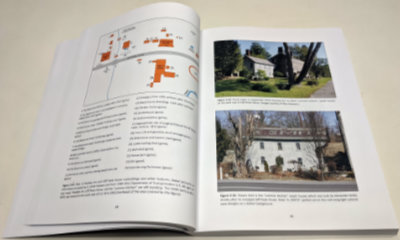 Both of the book’s subjects appeared almost immediately after the National Road passed by the land they would occupy. The first section of the Cliff Rock House was completed in 1830 and the Headley Inn’s first section in 1833. Other dates have appeared in articles and even on signs but Gerken sorts through the various claims and presents a solid case for these dates. Both structures have been enlarged and modified over the years. Despite their nearness to each other, the inns were constructed and operated independently by two separate families. That has not always been the case although it is again today.
Both of the book’s subjects appeared almost immediately after the National Road passed by the land they would occupy. The first section of the Cliff Rock House was completed in 1830 and the Headley Inn’s first section in 1833. Other dates have appeared in articles and even on signs but Gerken sorts through the various claims and presents a solid case for these dates. Both structures have been enlarged and modified over the years. Despite their nearness to each other, the inns were constructed and operated independently by two separate families. That has not always been the case although it is again today.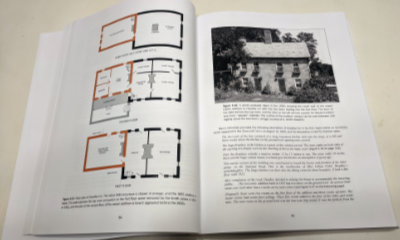 It is generally thought that the Headley Inn initially served as a stagecoach stop while the larger Cliff Rock House catered more to drovers herding sheep and other animals to market. That sort of division was never iron clad, of course, but that kind of thinking does serve to justify the two businesses being so close.
It is generally thought that the Headley Inn initially served as a stagecoach stop while the larger Cliff Rock House catered more to drovers herding sheep and other animals to market. That sort of division was never iron clad, of course, but that kind of thinking does serve to justify the two businesses being so close.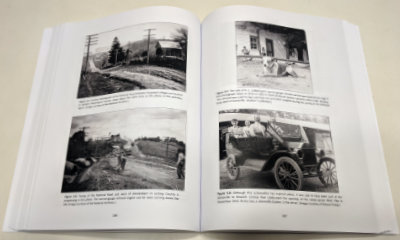 Living memory provides even more input to the post-tearoom era and here the living memory is sometimes Gerken’s own although it is more often her personal interviews with the short series of owners. The book is heavily illustrated with historical photos, maps, diagrams, newspaper clippings, and more. Modern photos include many taken by the author herself.
Living memory provides even more input to the post-tearoom era and here the living memory is sometimes Gerken’s own although it is more often her personal interviews with the short series of owners. The book is heavily illustrated with historical photos, maps, diagrams, newspaper clippings, and more. Modern photos include many taken by the author herself.